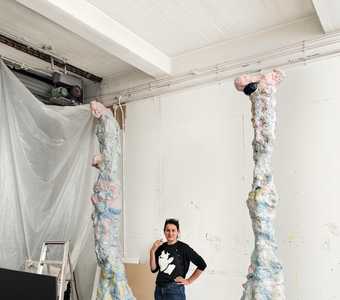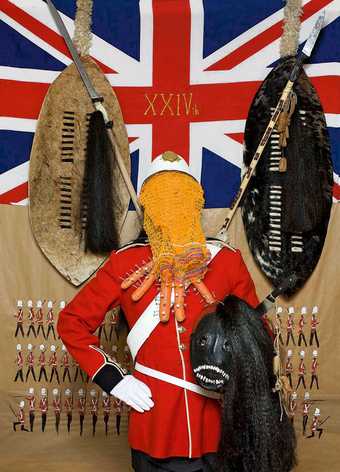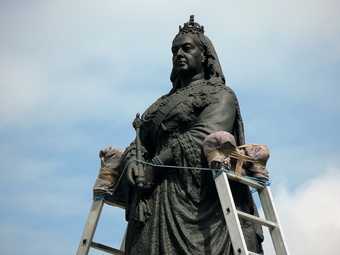
Installation of Sophie Ernst's Silent Empress in Castrop Rauxel Square, Wakefield, 2012
Courtesy the artist and Yorkshire Sculpture Park
In Silent Empress 2012, a public commission for Yorkshire Sculpture Park near Wakefield, the artist Sophie Ernst attached a sound tag to an existing statue of Queen Victoria. The sound was a monologue emanating from a megaphone temporarily positioned in front of the statue’s face. Comprising quotes from the journals and letters of Queen Victoria, and extracts from speeches and texts by past prime ministers (Blair, Brown, Cameron, Churchill, Gladstone), it gestured towards an apology for Britain’s colonial past.
The statue spoke for 30 minutes before Wakefield Council decided it was ‘disrespectful’ and needed to come down. This was unfortunate: we need our statues to speak uncomfortable truths. In functioning democracies the cultural sphere should be a profoundly unsafe space for sacred cows.
Modern Britain, as we all know, was built on empire – in particular, on the century-long, sustained transfer of enormous wealth from British India. This imperial looting, enabled by the rapacious capitalism of the East India Company, was integral to financing the Industrial Revolution, fighting two world wars and building the modern welfare state we call Britain.
We have, however, developed a collective amnesia that blinds us to empire’s complex role in the construction of Britain. Its acuteness can be gauged by David Cameron’s arriving in Beijing in 2010, wearing a poppy. We see it too in Michael Gove’s attempts, while Secretary for Education, to inject a more triumphalist narrative around empire in the history taught in our schools. Thankfully, the most egregious of Gove’s proposals were thwarted by public furore. But we are no closer to recognising the claim on Britain – economic, material and moral – from the British Empire’s greatest source of wealth: British India (now the nations of India, Pakistan and Bangladesh).
We can be English, Scottish, Welsh or from Northern Ireland – but we cannot be British if we fail to recognise our ‘Indianness’. This India-shaped hole in the construction of British identity fails to fully account for today’s Britain, and sows doubt over who gets to call it home. For people of South Asian origin in this country, these circumstances have created a sense that they belong here that is unrequited. This lack of acceptance is an accusation. In the actions of the disaffected and disenfranchised, in the rise of ethnic, racist and sectarian strife, it is also a threat – one that Brexit, and the divisions it brings, will exacerbate. Acknowledging this hole in our historical composition, however, is also a possibility; it is an opportunity to let the world in, and to make sense of how to live in our divided nation.
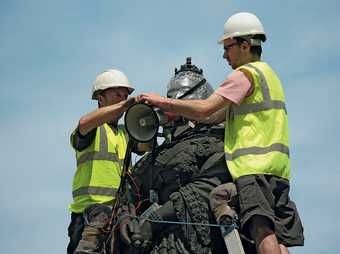
Sophie Ernst's Silent Empress 2012
Courtesy the artist and Yorkshire Sculpture Park
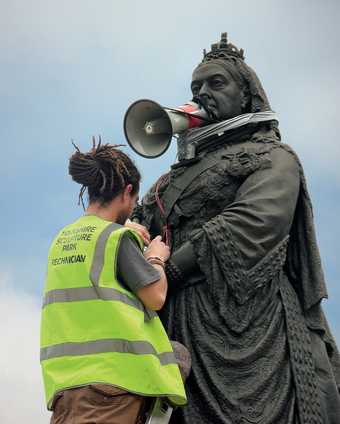
Sophie Ernst's Silent Empress 2012
Courtesy the artist and Yorkshire Sculpture Park
National histories are not national facts. The nation, as political historian Benedict Anderson reminded us, is an ‘imagined community’ – a cultural construct. And, with the paucity of cultural narratives or stories to directly engage our myths of origin, we have to acknowledge a failure of our collective imagination.
Britain is a nation insufficiently imagined, a failure for which cultural leaders – especially of institutions with ‘National’, ‘Britain’ or ‘British’ in their names – must share the blame with politicians.
This year of Article 50 and Brexit also marks 70 years of India’s Partition, the division of British India into India and Pakistan. Partitions address ethno-nationalism by drawing lines on maps and turning neighbours into strangers. But they are also, in the most literal sense, productive spaces – where nations are made, memories reconfigured and histories rewritten.
As Brexit resets our national conversation over who is entitled to call Britain home, let us remind ourselves that ‘home’ and ‘nation’ are cultural creations, and that any meaningful articulation of Britishness compelling enough to embrace multiple allegiances requires us to let our statues speak, recognise our Indianness, and learn to live with our partitioned selves.
Hammad Nasar is an independant curator and Senior Research Fellow at the Paul Mellon Centre for Studies in British Art.

